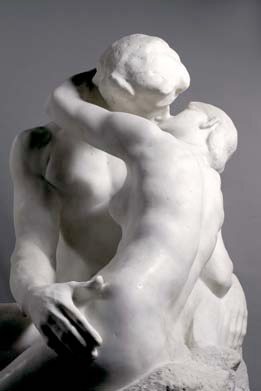Rodin Museum, Paris
Exposure of 8 June 2012 - March 3, 2013

The Kiss, marble
During the renovation of the Hotel Biron, marble and more than 60 preparatory models, many from private collections, will be presented in the exhibition Rodin, the flesh, marble.
With the staging of Didier Faustino , artist and designer talent, masterpieces such as Kiss or Danaid back to life!
The issue of materials in art is not simply a technical matter. It will graft a strong symbolic dimension: the marble and he returns to antiquity, the myth of ancient Greece and Renaissance Italy through the figure of Michelangelo . Marble is also considered as the material closest to the flesh hard and cold, it must become flexible and heat are transmuted under the chisel of the artist, thereby showing the virtuosity of the latter and its ability to transform matter. Rodin is primarily a modeler, like most of his contemporaries, and he therefore called early in his career practitioners. Nevertheless, its marbles are well identified and his "style", especially its use of non finito, is a trademark of, imitated by other artists. He also works at a time when precisely one turns away from the "practical" to return to direct carving. Long devalued by critics for historical and aesthetic, not the marbles are nevertheless a very important aspect of Rodin's art and it seemed appropriate to question again in this exhibition. The artist had with this material a special relationship, and his contemporaries saw him as the "ruler of the stone" before which "the marble trembles". Contrary to popular belief, its marbles, far from conventional, give life and shape to the modern soul, "the disjointed psyche, brutal and delicate, spirited and weary, negation and fervent." Not content to play his plastic sense of synthesis, the sculptor knows animate a conventional material doomed, a priori, to immobility.
Few books on marbles by Rodin, the exhibition catalog co-published with Hazan will fill an important gap by, among others, discover the manufactures of marble (providers, practitioners ...) at a shallow angle studied previously.

No comments:
Post a Comment
Note: Only a member of this blog may post a comment.